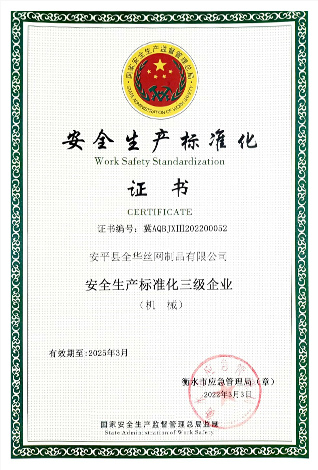Novemba . 26, 2024 16:30 Back to list
Durable and Aesthetic Gabion Retaining Walls for Your Landscape Design
High-Quality Gabion Retaining Walls An Innovative Solution for Earth Retention
In contemporary civil engineering and landscape architecture, the need for effective means of retaining soil and managing erosion is paramount. Among various solutions, gabion retaining walls have emerged as a popular choice due to their durability, aesthetic appeal, and environmental benefits. This article explores the importance of high-quality gabion retaining walls and their role in modern construction.
Understanding Gabions
Gabions are wire mesh containers filled with rocks, stones, or other materials, designed to serve a variety of purposes, including erosion control, slope stabilization, and water management. Traditionally used in civil engineering projects, gabions can easily be adapted for aesthetic landscaping, making them a versatile solution for both practical and visual needs.
The quality of gabion materials is crucial in determining the effectiveness and longevity of a retaining wall. High-quality gabions are constructed from strong, corrosion-resistant materials, typically galvanized or PVC-coated steel. This ensures that they can withstand challenging weather conditions and resist degradation over time, offering a reliable barrier against soil movement.
Advantages of High-Quality Gabion Retaining Walls
1. Erosion Control High-quality gabion walls effectively manage erosion by reducing the speed of surface water runoff. The porous structure of gabions allows water to flow through, reducing hydrostatic pressure while allowing vegetation to take root, further stabilizing the soil.
2. Aesthetic Appeal Unlike traditional concrete walls, gabion retaining walls offer a more natural and rustic appearance. The choice of stone fill can be customized, allowing homeowners and landscape architects to harmonize the structure with the surrounding environment. Whether it's a garden setting or a rocky hillside, gabions provide a visually pleasing solution.
high quality gabion retaining

3. Environmental Benefits Gabion walls can be designed to promote biodiversity. The gaps between stones can serve as habitats for small wildlife and plants. Furthermore, their permeable nature helps manage water runoff and reduces the risk of flooding in adjacent areas.
4. Cost-Effectiveness While the initial investment in high-quality gabion materials may be higher than other retaining walls, their durability and low maintenance needs can lead to long-term savings. Traditional retaining walls often require repairs or replacements, which gabion walls circumvent thanks to their robust construction.
5. Quick Installation High-quality gabion walls can be rapidly assembled on-site, reducing labor costs and time spent in construction. The process typically involves stacking the filled gabion units and securing them, which simplifies the construction process compared to more elaborate retaining wall systems.
Design Considerations
While the benefits of gabion retaining walls are considerable, certain design principles should be followed to ensure their effectiveness. Proper site assessment is essential to determine soil conditions, slope stability, and water drainage patterns. Professional engineering input can help design a gabion wall that meets specific site requirements and supports the desired aesthetics.
One critical aspect is the selection of appropriate fill material. Local stone sources can be used, not just for cost-effectiveness but also to enhance the wall's cohesion with the landscape. Training various sizes and types of rocks can provide a more natural look while ensuring sufficient weight for stability.
Conclusion
High-quality gabion retaining walls present a compelling solution for managing soil retention, erosion control, and landscape enhancement. Their durability, aesthetic versatility, and eco-friendly characteristics make them a preferred choice for both professional engineers and homeowners. As we continue to face challenges related to climate change and soil erosion, the adoption of innovative solutions like gabion walls will be essential in building resilient environments. Embracing these techniques not only improves the landscape but also contributes to sustainable land management practices, harmonizing human construction with nature.
-
Wire Mesh Thickness Impact on Gabion Wall Load Bearing
NewsAug.12,2025
-
Ultimate Guide to Hexagonal Gabion Box
NewsAug.12,2025
-
Types of Rocks for Gabion Baskets Durability and Aesthetics
NewsAug.12,2025
-
Standard Gabion Box Sizes and Their Industrial Applications
NewsAug.12,2025
-
Easy Guide to Building Garden Gabion Cages at Home
NewsAug.12,2025
-
Drainage Solutions for Gabion Mesh Structures
NewsAug.12,2025
-
Visualizing Gabion 3D Integration in Urban Landscapes with Rendering
NewsJul.23,2025






